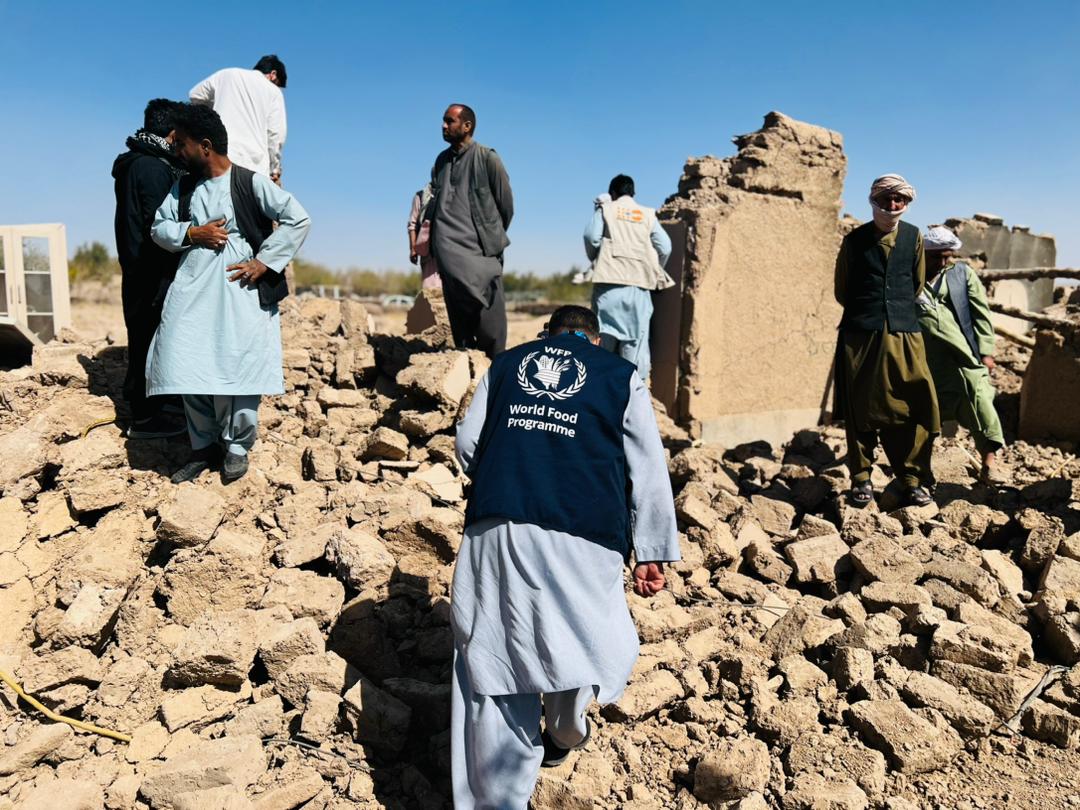What donors can do to support Afghanistan’s back-to-back earthquake survivors

Two 6.3-magnitude earthquakes occurred in Afghanistan on Oct. 7, 2023, 30 minutes apart, about 25 miles northwest of Herat City, a crossroads of regional trade. Horrifically, another 6.3-magnitude earthquake struck the same region of Herat Province on Oct. 11, causing further destruction and damage. These earthquakes are yet another tragedy to befall the nation of 40 million people.
In Afghanistan, a country already struggling with a crumbling economy, hunger, drought, insecurity and underdevelopment, the devastation is exponential, and the Afghan people need our support.
A layered crisis
As of Oct. 11, UNOCHA estimated that 11,066 people had been affected by the earthquakes across four districts of Herat Province. The worst affected area is the Zindajan district, with 1,294 deaths, 1,688 injuries and 100% of homes destroyed. An estimated 1,714 homes were destroyed across the Zindajan, Gulran and Kushk/Rabat-e-Sangai districts.
A spokesman for Afghanistan’s national disaster authority, Janan Sayiq, said on Oct. 9 that around 4,000 people were killed, but other reports say the figure is closer to 2,000. The Oct. 11 earthquake reportedly killed at least one person and injured another 140. As is often the case after disasters, accurate figures on deaths and injuries are a challenge.
UNOCHA said on Oct. 11 that informal reports estimated an additional 6,000 people were affected in Injil district, the epicenter of the Oct. 11 earthquake. The earthquake destroyed all 700 homes in Chahak village, Injil district. Damaged housing and the fear of returning home due to aftershocks have resulted in several informal sites across Herat City.
According to the UN Children’s Fund, more than 90% of those who died in the week’s earthquakes were women and children. Women and children were disproportionately affected because they were more likely to be at home while men were out of the house working. Women-headed households are particularly vulnerable, with protection concerns and challenges obtaining humanitarian assistance.
Before the most recent earthquakes, the humanitarian aid system in the country was already overstretched and underfunded, with more than 28 million people in need of assistance.
The repercussions of the cuts in international assistance since the Taliban takeover and the freezing of foreign exchange reserves have resulted in communities falling further into poverty. According to WFP, nine out of 10 Afghans lack adequate access to food, with children and pregnant women being the hardest hit.
FAO-WFP’s latest Hunger Hotspots report lists Afghanistan as a country of highest concern, with populations already in catastrophic conditions and at risk of deterioration against the Integrated Food Security Phase Classification system.FAO and WFP also warn that acute food insecurity will likely deteriorate from June to November 2023.
Due to funding cuts, humanitarians have had to reduce services and aid provision in some parts of the country this year. It is unclear whether such cuts will affect the earthquake response and the ability of the humanitarian community to scale up. What is clear is that disaster survivors need assistance in the short term and will require support for longer-term recovery.
As winter approaches, survival for earthquake-affected communities is a concern. Despite an overstretched system and limited funding, humanitarian partners have begun to reach earthquake-affected communities with assistance in priority need areas. UNOCHA has identified priority needs, including emergency shelter, non-food items, latrines, potable water, food assistance and protection.
How you can help
The Center for Disaster Philanthropy is monitoring the situation and advises that foundations, corporations and individual donors explore helping in the following ways:
- Keep humanity at the center. In Afghanistan, the concurrence of multiple disasters exacerbates severely challenging conditions amid limited resources. It is straining coping mechanisms and creating devastating ripple effects across health, economic and social indicators. Right now, the reality is that millions of Afghans depend on humanitarian aid for their very survival. Together, donors can help ease this burden, particularly going into the harsh winter season.
- Provide flexible and multi-year funding to partners with deep roots in communities. As with any complex humanitarian emergency, political positioning and competing demands may overshadow the dire situation of affected people. Provide funding that allows national and international nonprofits working with affected Afghans to listen and respond to the needs and solutions presented by community members.
- Stay informed and take a two-track approach. The immense scale of needs calls us to stay engaged in the well-being of the people of Afghanistan. We must advocate for humanitarian funding and, at the same time, urge the UN and governments to support Afghanistan to find longer-term solutions toward peace and prosperity. You can support immediate humanitarian and longer-term recovery and resilience needs through your giving choices.
Don’t miss critical updates through CDP’s Afghanistan Humanitarian Crisis profile, which contains the latest information about survivors’ evolving needs from the recent earthquakes.
The CDP Global Recovery Fund allocates your donation to where it is needed most to address medium- to long-term recovery from sudden on-set disasters or protracted humanitarian emergencies. Learn how your gift to the fund could benefit communities devastated by the 2023 Afghanistan earthquakes.
You can always refer to last year’s webinar after the 2022 earthquake for insights about responding to disasters in Afghanistan: “Afghanistan’s earthquake: When a disaster meets a humanitarian crisis.”
